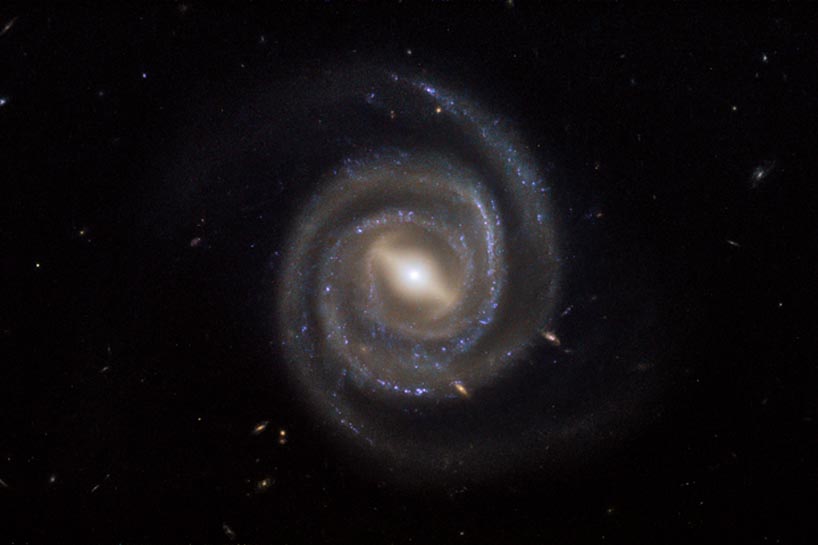
Galaxy
RA 11h 0m 47.88s Dec 10° 43' 41.18"
Leo
500 million light-years
14.7
0.94' × 0.76'
2.59 x 1.35 arcminutes
North is 12.1° left of vertical
ESA/Hubble & NASA
January 1, 2018
ABOUT THIS IMAGE:
This image, captured by the NASA/ESA Hubble Space Telescope’s Wide Field Camera 3 (WFC3), shows a galaxy named UGC 6093. As can be easily seen, UGC 6093 is something known as a barred spiral galaxy — it has beautiful arms that swirl outwards from a bar slicing through the galaxy’s center. It is classified as an active galaxy, which means that it hosts an active galactic nucleus, or AGN: a compact region at a galaxy’s center within which material is dragged towards a supermassive black hole. As this black hole devours the surrounding matter it emits intense radiation, causing it to shine brightly.
But UGC 6093 is more exotic still. The galaxy essentially acts as a giant astronomical laser that spews out light at microwave, not visible, wavelengths — this type of object is dubbed a megamaser (maser being the term for a microwave laser). Megamasers such as UGC 6093 can be some 100 million times brighter than masers found in galaxies like the Milky Way.
Hubble’s
WFC3 observes light spanning a range wavelengths — from the near-infrared,
through the visible range, to the near-ultraviolet. It has two channels
that detect and process different light, allowing astronomers to study
a remarkable range of astrophysical phenomena; for example, the UV-visible
channel can study galaxies undergoing massive star formation, while the
near-infrared channel can study redshifted light from galaxies in the
distant Universe. Such multi-band imaging makes Hubble invaluable in studying
megamaser galaxies, as it is able to untangle their intriguing complexity.
From Wikipedia:
UGC 6093 is a barred spiral galaxy located approximately 500 million light years (or about 153 megaparsecs) away from Earth in the constellation of Leo. This galaxy is known to host an active galactic nucleus, which is caused by the accretion of matter by a supermassive black hole located at its center, thus causing it to emit huge amounts of radiation and making UGC 6093's core shine excessively. This galaxy is also a megamaser, which means that it acts as a giant astronomical laser generating microwaves rather than visible light.